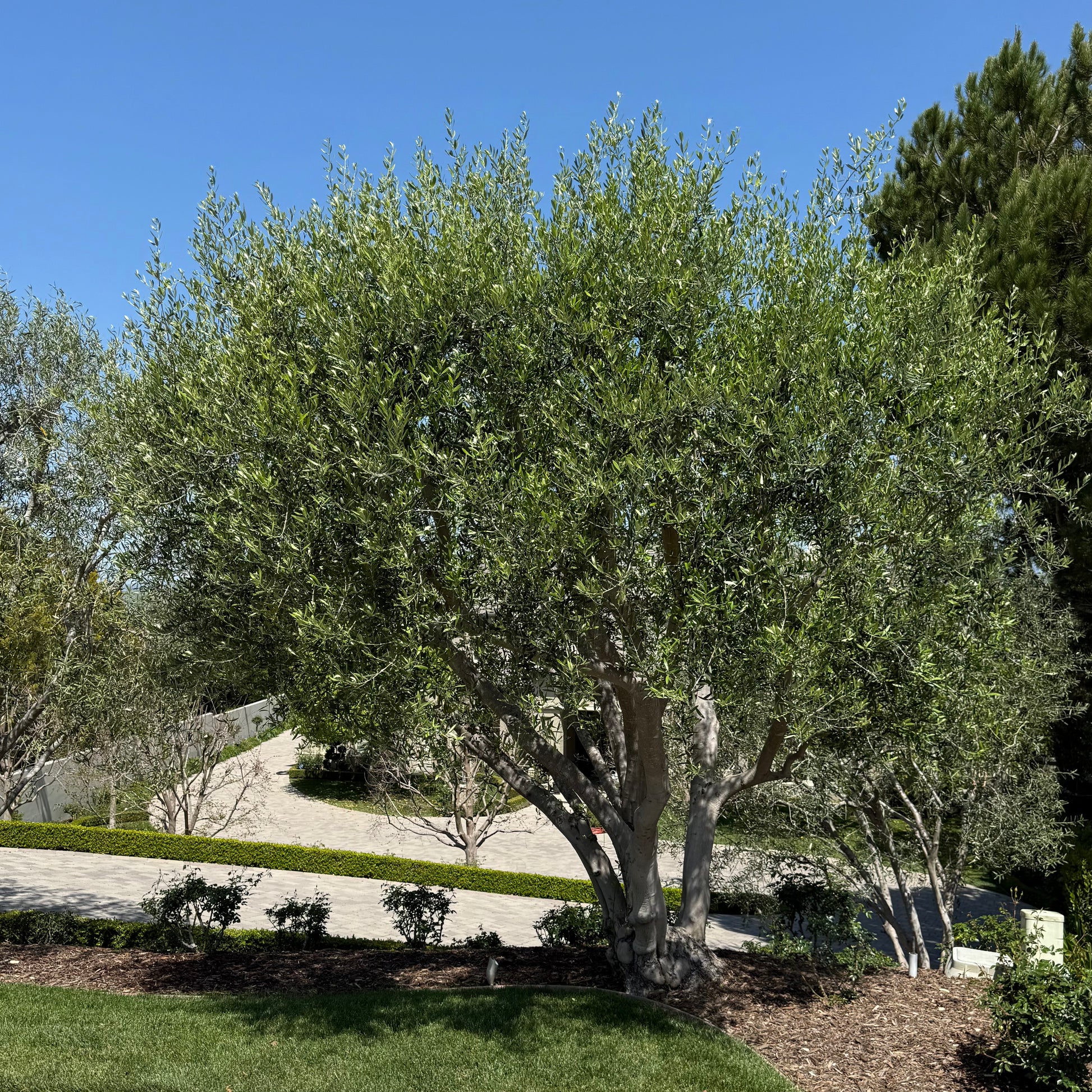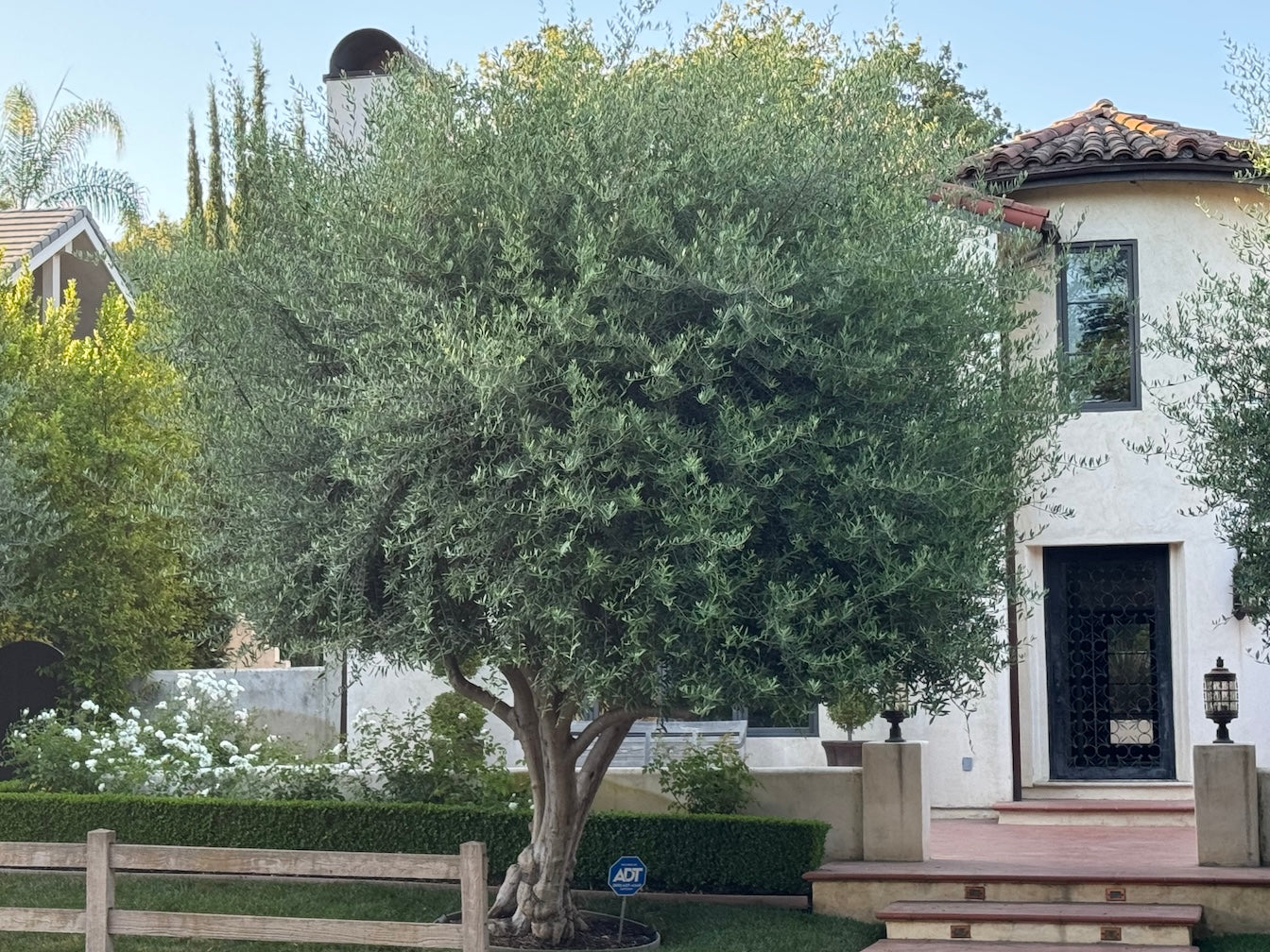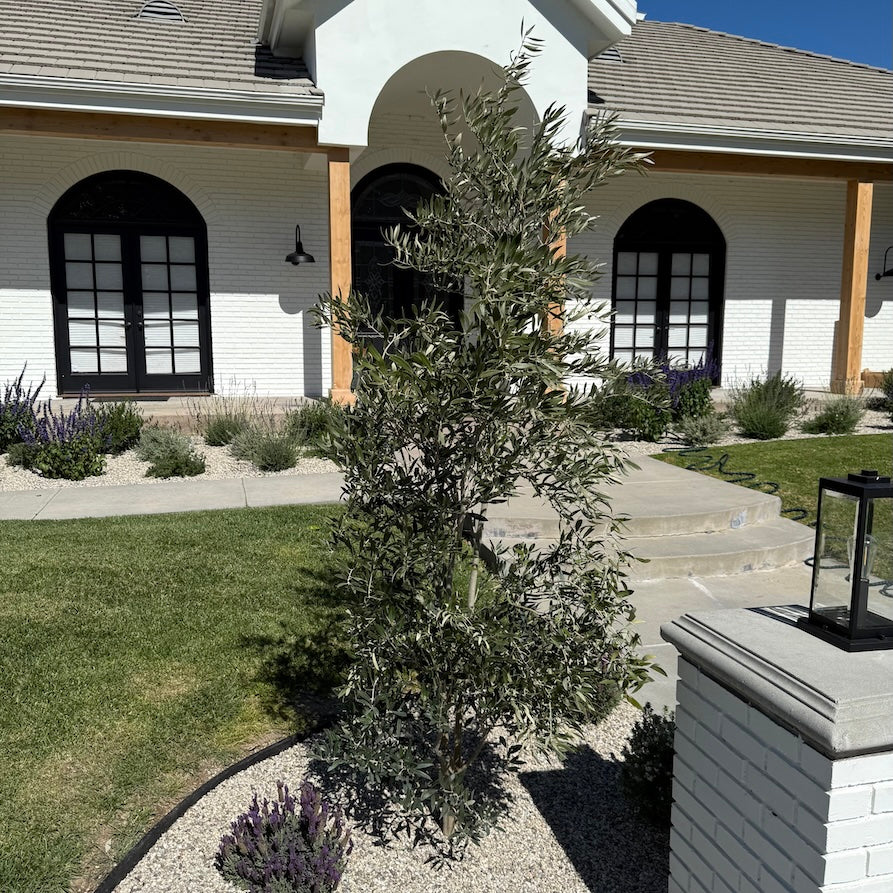
Wilson Olive Tree
Olea europaea 'Wilsonii' Multi
Delivery
24-hour money-back guarantee
Free delivery on orders over $349
Big Project? Call 888-444-1126 for bulk rates!
Olea europaea 'Wilsonii' is a popular ornamental olive tree known for producing less pollen and fruit than traditional olive trees, resulting in a cleaner landscape.
Wilson Olive Trees thrive in California's Mediterranean climate, making them ideal for shade and capable of tolerating heat and drought. These adaptable, resilient trees can live for many years, offering long-lasting beauty and practicality.
The multi-trunk or low-branching form of Olea europaea ‘Wilsonii’ creates a dramatic, V-shaped outline with abundant foliage, enhancing any landscape with its character and beauty. This nearly fruitless, low-maintenance tree is perfect as an accent plant or focal point in a courtyard, and can be illuminated at night for added effect.
Wilson Olive Trees feature a spreading, rounded crown of grey-green leaves with silvery undersides. Their multiple grey trunks become gnarled with age, adding timeless beauty to gardens and patios. With less fruit production, they are suitable for planting near walkways, reducing mess, and their low pollen levels make them favorable for allergy sufferers.
Is the Wilson Olive Tree fruitless?
Can Wilson Olive Trees be grown in containers?
How fast does a Wilson Olive Tree grow?
Is the Wilson Olive Tree drought tolerant?
Olive
15-30 ft.
20-30 ft.
Low
Perfect Your Landscape With Expert Help
Customize your yard with confidence. Schedule your free consultation today and bring your outdoor space to life!


